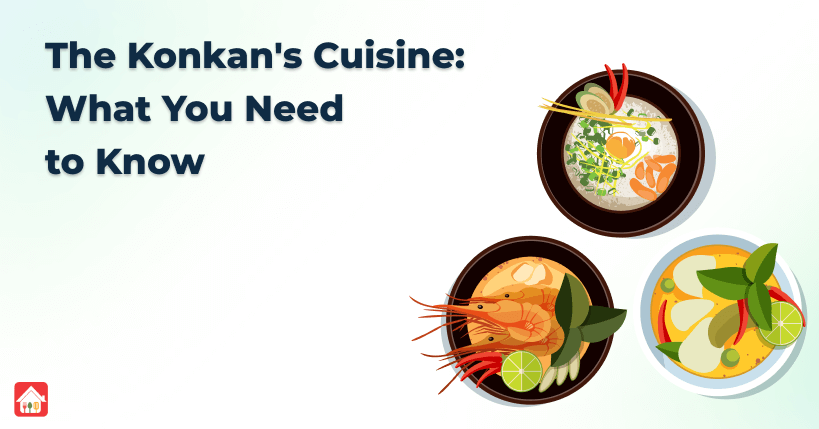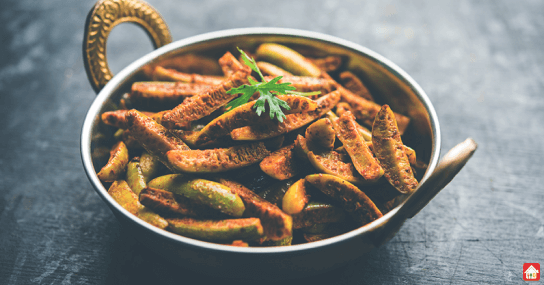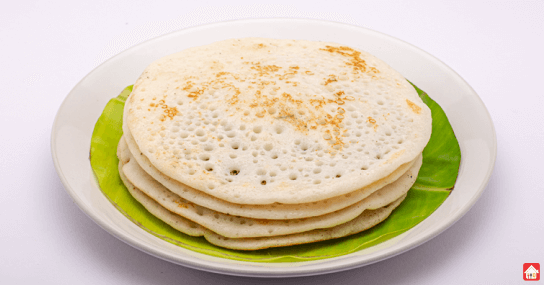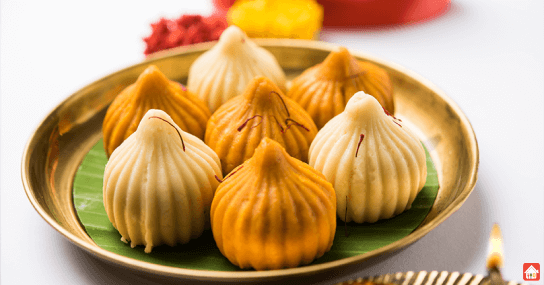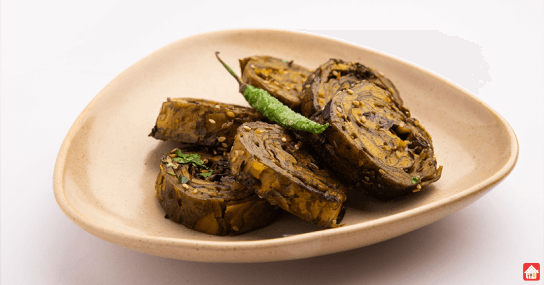Table of Contents
Konkani food is primarily non-vegetarian, but it does contain some vegetarian and milder-flavoured Konkanastha brahmin cooking. Typically, two preparation methods—Karwar and Malvani—are used. Coconut and kokam, which are staple commodities in every Konkan household, are frequently thought of as being absent from traditional Konkani cuisine.
Here are the Konkan’s cuisines listed below:
Sol Kadhi
Sol kadhi is a gently spicy beverage made with kokum and coconut milk that is among the most well-known beverages to come out of the Konkan region. Since it is regarded as a digestive, a glass is usually sipped following a meal. If you walk throughout the Konkan shore, you may encounter many variants. It occasionally may contain cumin, garlic, and coriander leaves. This watery variation has chopped cumin and coriander in kokum-infused water (like an infusion). If you were contemplating, kokum is a natural item in the mangosteen family.
Bombil
A common dish served in Konkan regions, such as Maharashtra, is bombil fry, also known as Bombay Duck. This is a side dish that many restaurants and pubs in Mumbai serve to go with your beverages. Bombay duck is a type of fish that can be eaten fresh or dried and should not be confused with any bird species. It is fried after being mixed with spices, occasionally with rava on top, and served with lemon wedges.
Patholi
Imagine patholi as a thin version of a pancake or roll made of rice. It is cooked in turmeric leaves and stuffed with desiccated coconut. It is flavorful and fragrant, and big dollops of ghee are placed on top. Banana leaves are used in place of turmeric leaves when they are unavailable. These are cooked during events that take place during the monsoon season and provide the ideal dessert to a scrumptious feast.
Bharli Vange
The recipe for this stuffed eggplant in gravy dish differs depending on the Konkan region. The north Maharashtrian variation of the dish uses poppy seeds, sesame seeds, and nigella seeds, whilst the Konkan technique also includes roasted peanuts and the fiery Malvani masala. The Karwar-style variation tastes best when paired with rice and includes a coconut-based sauce.
Kolombo
Kolombo must be mentioned when discussing Kazamb. This Konkani sambar isn’t all that unlike from the standard sambar prepared in a Tamil home. The Konkani version has a lot more veggies than the other versions, but the spices and cooking techniques are essentially the same.
Clams Gravy
Kolombo must be mentioned when discussing Kazamb. This Konkani sambar isn’t all that unlike from the standard sambar prepared in a Tamil home. The Konkani version has a lot more veggies than the other versions, but the spices and cooking techniques are essentially the same.
Airavat
A delicacy from North Kanara, airavat is a delicious fusion of dates, tamarind, jaggery, and ginger. It is a staple at celebrations including holidays, weddings, and religious feasts and is a flavour explosion. Although little is known about the dish’s origins, we can tell you that one taste of this Konkan delicacy will have you hankering for more.
Kadamb
The Konkani equivalent of steamed idlis is called kadamb. It is a superb breakfast elective when made with rice, cucumber and coconut. It is cooked with mustard seeds and wrapped in a banana or turmeric leaf. Chutneys should be served on the side.
Konkani Tendli Sukke
A Konkani-style Tindora stir-fry is known as Konkani Tendli Sukke. With the addition of jaggery for sweetness and tamarind for a hint of tartness, the dish is spiced with a freshly ground masala of coconut and red chilies.
Amboli
Dosa is to South India what Amboli is to the Konkan. Period. These soft, light hotcakes are made with rice flour, coconut milk, and harsh buttermilk. They are best served warm with coconut chutney or some other sauce.
Monga Mole Randayi
This sprouting moong dal curry, a Konkan specialty, closes the list on a wholesome note. This meal, which is also from the sambar family, is cooked without onions and garlic. It is a traditional component of most Konkani thalis and is high in protein.
Pangi
This traditional pancake is created with rice flour, jaggery, and is cooked on a girdle that is covered with banana leaves. The pancake is flavoured with flavours from banana leaves and tastes amazing! This common breakfast item is typically served with some homemade ghee.
Modak Ukadiche
When these packed rice dumplings are warm, they taste like pure heaven. The sticky mixture of coconut and dry fruit only needs a generous amount of ghee to be ready.
Tomato Curry
Tomato curry offers tingling tastes from spices and ground coconut. Even if there are no vegetables in the kitchen, don’t panic. The easiest curry to make is tomato. This delicious tomato curry pairs beautifully with roti or steaming rice and can be slurped up with gusto. Many people enjoy having this curry and rice as a dinner. This curry has a tangy flavour because to the tomatoes. Additionally, the sweetness of the coconut, the spiciness from the red chilies, and the spices may all be used to balance off the tanginess of the tomatoes.
Cucumber Cake
Goa is the origin of the traditional recipe for cucumber cake known as Tavsali. Despite being referred to as a cake, it is steamed. Although normal cucumbers or the long, dark green cucumbers might work just as well, yellow cucumbers are the most popular. It becomes even more nutritious when rava (semolina) is added along with the addition of cucumber, coconut, and jaggery.
Alu Vadi
Pathrode is another name for Alu Vadi. Colocasia leaves are used to roll the packed patra. Its Hindi name is “Arbi ke patte.” Alu or aloo is the Marathi word for colocasia leaves. When prepared with the proper seasonings, it tastes delicious to eat. In order to remove all of those qualities from the leaf, it is also a tongue-itchy that must be steeped in tamarind water for an entire night. In hotels and houses alike, this vadi is served as a snack. When attendees arrive at events, they are served.

